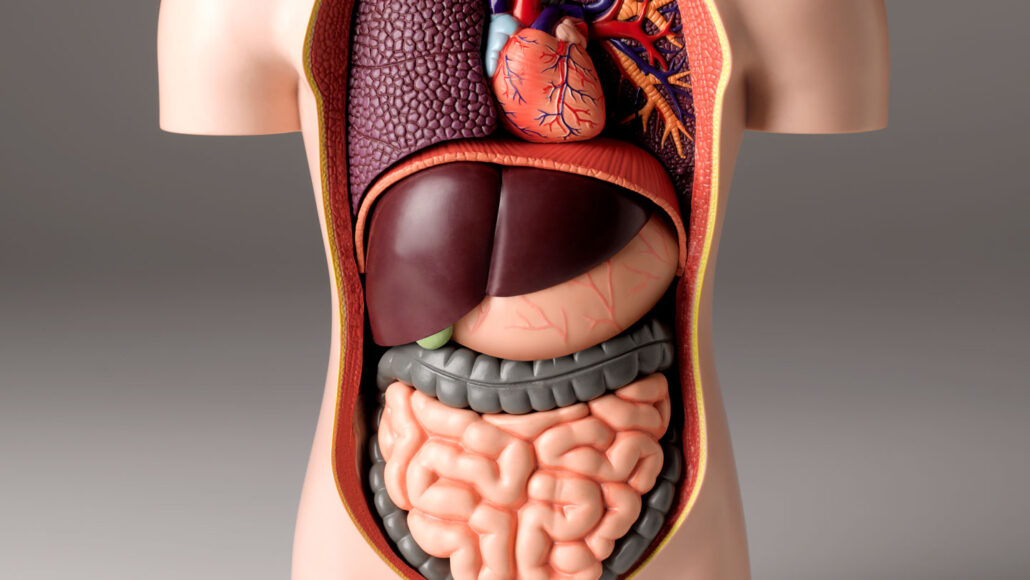average: (in science) A term for the arithmetic mean, which is the sum of a group of numbers that is then divided by the size of the group.
bile: A yellowish to olive-green liquid secreted by the liver (and then stored in the gallbladder). When needed, the body releases bile into the small intestine to help digest fatty materials.
diet: (n.) The foods and liquids ingested by an animal to provide the nutrition it needs to grow and maintain health. Sometimes this is a specific food-intake plan. (v.) To adopt a specific food-intake plan. People may adopt one for religious or ethical reasons, to address food allergies or to control a disease such as high blood pressure or diabetes. They may also adopt one in an effort to lose weight, though this can an unhealthy thing if not done under the guidance of a health professional, such as a physician or registered dietician.
hepatitis: A potentially serious form of liver inflammation due to infection by any of several hepatitis viruses. They have been named hepatitis-A, -B, -C, -D and -E viruses.
infection: A disease that can spread from one organism to another. It’s usually caused by some type of microbe.
iron: A metallic element that is common within minerals in Earth’s crust and in its hot core. This metal also is found in cosmic dust and in many meteorites.
liver: An organ of the body of animals with backbones that performs a number of important functions. It can store fat and sugar as energy, break down harmful substances for excretion by the body, and secrete bile, a greenish fluid released into the gut, where it helps digest fats and neutralize acids.
organ: (in biology) Various parts of an organism that perform one or more particular functions. For instance, an ovary is an organ that makes eggs, the brain is an organ that makes sense of nerve signals and a plant’s roots are organs that take in nutrients and moisture.
smoking: A term for the deliberate inhalation of tobacco smoke from burning cigarettes.
toxic: Poisonous or able to harm or kill cells, tissues or whole organisms. The measure of risk posed by such a poison is its toxicity.
virus: Tiny infectious particles consisting of genetic material (RNA or DNA) surrounded by protein. Viruses can reproduce only by injecting their genetic material into the cells of living creatures. Although scientists frequently refer to viruses as live or dead, in fact many scientists argue that no virus is truly alive. It doesn’t eat like animals do, or make its own food the way plants do. It must hijack the cellular machinery of a living cell in order to survive.








